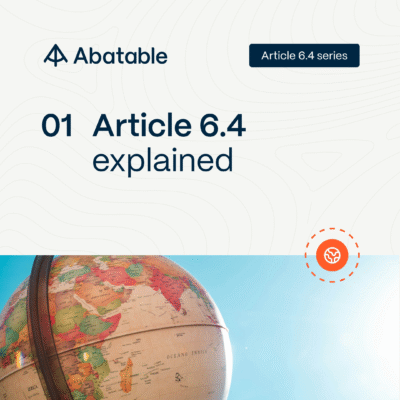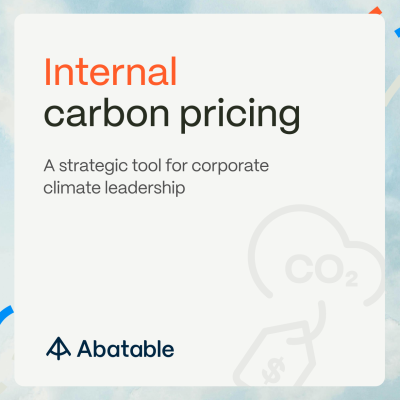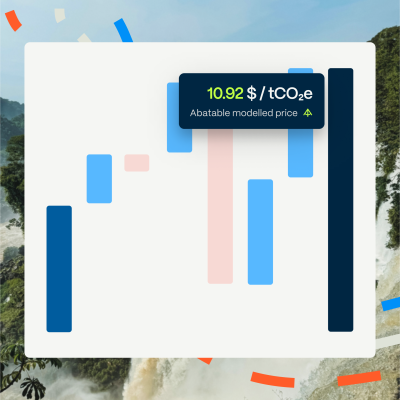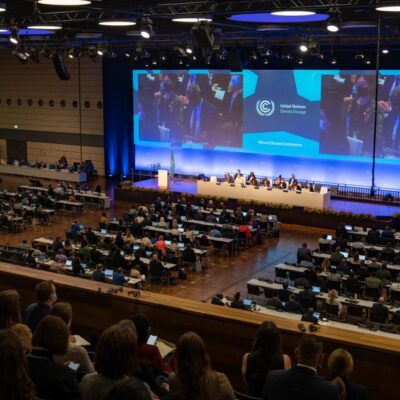To-the-wire negotiations in Dubai failed to produce adopted texts for the Paris Agreement’s Article 6.2 and Article 6.4. Despite this, there were some positives to be gained for carbon markets. Greg Lydka Morris explains.
COP meetings have a history of overrunning, and this year’s was no exception. A day after the scheduled finishing time of the UNFCCC’s 28th Conference of the Parties, the gavel came down in Dubai and the Paris Agreement’s first-ever global stocktake was concluded. Fossil fuels will be ‘transitioned away’ from, the renewable energy industry will have a busy time tripling current renewables capacity worldwide in just six years, and there was some progress made on loss and damage.
The extended time was not enough however to facilitate an agreement on exactly what the future will look like for the Paris Agreement’s key carbon market mechanisms, Article 6.2 and Article 6.4.
This has resulted in some confusion and will result in at least a year’s delay in the formation of a global country-driven carbon market. Here we unpack what the outcome means and what’s next for carbon markets worldwide.
Lack of Article 6 adoptions
Despite lengthy discussions, country negotiators in Dubai did not adopt the draft texts on Article 6.2 or Article 6.4. This is a major and perhaps unexpected setback for Article 6.4.
Prior to COP28 there had been general positivity that a text could be agreed upon after an extraordinary Supervisory Body meeting in November reached an agreement on Article 6.4 methodology frameworks and removals. This would have seen Article 6.4 operational by 2025. This now seems doubtful.
The issues that blocked the agreement of the text included:
- Disagreements about the revocation of credits, whereby host nations would be able to recall a credit already transferred and correspondingly adjusted to a buyer party. Veiled Article 6.2 text appeared to provide wiggle room for revocations to be activated in a trade in ‘extreme circumstances’.
- The methodological and, in particular, removals guidance the Supervisory Body had agreed on in advance of COP was reported as a contentious issue throughout the talks, and the final draft 6.4 text only ‘welcomed’ rather than endorsed the Supervisory Body’s work – before it was then rejected. The Supervisory Body essentially now gets the chance to resit the exam.
- Within Article 6.2, which governs country-to-country trades, there was debate around the role and involvement of the UN in ensuring environmental integrity – particularly between the EU, which pushed for greater oversight, and the US, which wanted limited involvement.
Not all doom and gloom?
So, after two weeks of discussion, negotiation and amendments, we didn’t reach a concrete outcome. But we can infer some things from COP28.
Despite the failure to adopt the Article 6.2 and 6.4 texts, it’s worth remembering that Article 6.2 is already operational, with the first trade of ITMOs (internationally transferred mitigation outcomes) between Switzerland and Thailand due imminently.
Article 6.2 is more flexible than the centralised Article 6.4 mechanism, and allows countries to establish their own rules of trade. Notably, this may enable the use of tried, tested, and operational voluntary carbon market standards. Private sector actors eager to engage may now look to deploy capital in countries with Article 6.2 agreements, rather than wait at least another year on Article 6.4.
However, the debate over revocations lingers on. Sellers should be wary that any premium a buyer might pay for an authorised credit would be significantly reduced if there were a risk it could be revoked.
COP28 saw a plethora of new Article 6.2 agreements signed between countries. However, on the demand side these remained concentrated amongst a small pool of buyer countries, including Switzerland, Singapore, and the UAE (via Blue Carbon). Kuwait was the only new buyer country to announce a bilateral agreement at COP.
On the supply side, the countries involved in trades continued to expand. One challenge in these deals however is the need for countries to have the required infrastructure, or the capacity to develop the infrastructure, to participate in Article 6 trades. In this vein, there were a number of initiatives announced by international bodies and buyer countries to support capacity building around the world. This is logical as it will increase the supply of ITMOs and the speed with which they can come to market in the future.
Expect more emphasis on capacity building in the coming year.
One thing Article 6.2 advocates will be wary of is the negative press which could derail the mechanism’s integrity before it’s properly got off the ground. There has been a particular focus on the recent deals between Blue Carbon and host countries. Accusations have ranged from land grabbing to limited attention paid to equitable benefit shares for local communities.
This may have contributed to disagreements between parties on the level of oversight by the UN in Article 6.2 during this COP. Stakeholders will be wary of the scrutiny the voluntary carbon market (VCM) has faced this year and the reputational damage this has caused, and will be eager to prevent this from spilling over into Article 6 mechanisms.
Keep up to date with Article 6 agreement news with Abatable’s carbon market country policy profiles.
Rejection provides reflection
While there was a fairly positive attitude around Article 6.4 going into COP, with optimism that a rulebook would be agreed upon, some serious governance challenges have been exposed, with questions around the mechanism’s ability to deliver consensus.
This pushes the expected operationalisation of Article 6.4 down the line another year to 2026 at the earliest, but raises the question as to whether agreement and progress can be reached at next year’s COP. Market confidence, and the private sector looking to invest in the market, may not be prepared to wait with this risk and look elsewhere.
For the Supervisory Body, which had worked hard on recommendations for methodological frameworks and removals, lukewarm wording in draft texts and eventual rejection will be hard to swallow. In one sense, the question might be, given the difficulty the Supervisory Body had in finding agreement this year, what further amendments will they be able to make? On the other hand, the debates in COP should have provided more of a framing of the disagreements and the red flags between parties, which would have provided constructive guidance for work moving forward.
This will all be of limited comfort to countries desperate to operate in the market. For some of the least well-off countries, carbon markets offer an opportunity to receive much-needed climate finance, supporting their economic development and providing local jobs and technology transfer. Without the institutional capacity to develop domestic infrastructure, they cannot operate in the Article 6.2 mechanism and must wait for the centralised 6.4 systems. For them, COP28 represents another year lost to access this much-needed capital.
A rejuvenated VCM
While Article 6 stole the headlines, the VCM quietly left this COP with its reputation enhanced. The market has worked hard to clean up its act and, while not the panacea, it offers solutions to some of the challenges confronting Article 6. Not least, it has been providing capital to impactful projects in some of the poorest countries around the world for years. Investors who have been looking for more guidelines on Article 6 may look to the VCM, rather than wait indefinitely.
Moreover, mitigation strategies have been developed by operators in the VCM in response to the uncertainty Article 6 poses. For instance, seeking letters of authorisation from governments to trade credits abroad, even if the government has indicated no intention to develop Article 6 frameworks, is a relatively straightforward option. This makes the operating environment of the VCM more attractive.
And, after a challenging year, the VCM regained much-needed momentum at COP which could provide a launchpad into 2024. The VCM fan club gained some famous members, with endorsement from US Special Presidential Envoy for Climate John Kerry and World Bank President Ajay Banga, amongst others.
Market participants also showed they were serious about making the VCM work. Industry bodies announced they will work together to form an end-to-end integrity framework that will provide clarity, while CORSIA-aligned standards announced intentions to collaborate on best practices. This should enhance market integrity, consistency and confidence. The collaboration amongst VCM players was in stark contrast to the squabbles around Article 6.
Finally, the International Organization of Securities Commissions and the Commodity Futures Trading Commission released long-awaited guidance around carbon credits, signalling a pathway for mainstreaming carbon into financial markets.
The VCM has also done a lot of the heavy lifting and developed much of the infrastructure to create a mature market that could be adapted to Article 6. After a difficult year, COP28 may have shone a light back on the voluntary market’s positives. It may not yet be perfect, but the VCM is operational, impactful, and continually improving.
Roll on Baku and COP29.
Read our more in-depth blog posts on Article 6.2 and Article 6.4 where we outline how the draft 6.4 text relates to the IC-VCM’s Core Carbon Principles.
Want more? Our carbon market country policy profiles provide deep dives into policy developments on a country level, including Article 6 and Paris Agreement commitments.















































































































